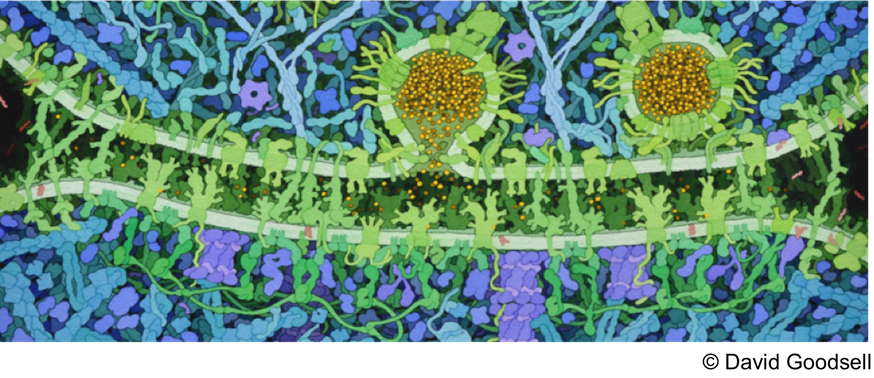A detailed description of protein interacting surfaces is of paramount importance to the understanding and the control/modulation of protein-protein interactions. We present JET2, a new method for predicting protein interfaces at large scale (Laine and Carbone, 2015). Contrary to machine learning approaches, JET2 combines in a rational and very straightforward way three sequence- and structure-based descriptors of protein residues: evolutionary conservation, physico-chemical properties and local geometry. The implemented strategy yields very precise predictions for a wide range of protein-protein interfaces and discriminates them from small-molecule binding sites.
Beyond its predictive power, the approach permits to dissect interaction surfaces and unravel their complexity. JET2 is useful to predict and learn about the different partners of a protein. It allows to identify multiple recognition patches within large protein interfaces and characterize their different properties and origins. We show how the analysis of the predicted patches can foster new strategies for protein-potein interaction modulation and interaction surface redesign. JET2 is implemented as a fully automated tool, freely available at www.lcqb.upmc.fr/JET2.
JET2 was applied on more than 20 000 protein structures, representing the non-redundant set of non-homologous chains extracted from the Protein Data Bank (Ripoche et al., 2017). The generated knowledge base is freely accessible to the community: http://www.jet2viewer.upmc.fr.
In the context of large-scale docking studies, it was shown that precise predictions of protein interfaces can help identify cellular partners and discriminate them from non-interactors (Sacquin-Mora et al. 2008, Lopes et al. 2013). The performance of JET2 let us envisage promising developments in this direction.
References:
E. Laine, A. Carbone (2015) The local geometry and evolutionary conservation of protein surfaces reveal the multiple recognition patches in protein-protein interactions. PLoS Comput. Biol. 11:e1004580
A. Lopes, S. Sacquin-Mora, V. Dimitrova, E. Laine, and Y. Ponty (2013) Protein-protein interac- tions in a crowded environment via cross-docking and evolutionary information. PLoS Comput. Biol. 9:e1003369.
H. Ripoche*, E. Laine*, N. Ceres, A. Carbone. (2017) JET2 Viewer: a web server predicting multiple protein-protein interaction sites for PDB structures. Nucl. Acid. Res. 45:D236-D242
S. Sacquin-Mora, A. Carbone, and R. Lavery (2008) Identification of protein interaction partners and protein-protein interaction sites. J. Mol. Biol., 382:1276–1289.

 PDF version
PDF version
